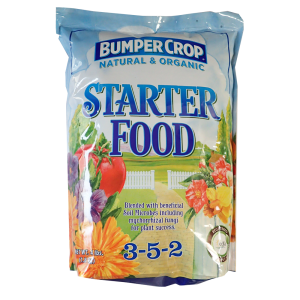No garden? No problem! With sun and water, everything that you can grow in the ground can also be grown in containers. So, there’s no need to feel slighted if you simply have a fire escape, balcony, roof-top, doorstep, deck, porch, or patio to use as growing space. Master Nursery® is here to provide you with the products and information needed to give you confidence and ensure your success when planting in containers.
Why Use Containers?
The benefits of growing containerized vegetables and flowers go beyond the issue of space. There are plenty of other compelling reasons to plant in pots, including…
- There are fewer problems with pests such as groundhogs, deer, rabbits, and soil-borne diseases.
- The soil in pots warms up more quickly in the Spring allowing for earlier planting and an extended growing season.
- Less bending, squatting, and kneeling is required for gardeners making container growing perfect for those with limited mobility.
All plants can be grown in any vessel that can hold soil, have adequate drainage, and are large enough to hold the selected plant or plant groupings. There are endless options available at your garden center, or you may recycle items that you already have as long as they meet this criteria.
Selecting Vegetables and Flowers for Containers
While all veggies and flowers can be grown in containers, some are better suited than others. Each year, there are more dwarf, compact, or bush varieties of seeds and plugs available for purchase at your garden center. Keep an eye out for these.
Plants that grow particularly large (that sprawl), or veggies that must be grown in large numbers (like corn), may take more effort and careful planning to ensure an adequate yield. Have no fear of vining plants as these may be trellised up a wall, fence, or railing. You may also allow them to cascade downward from a taller pot or an elevated one. As for smaller plants, a hanging basket or window box may be used.
Tips for Growing in Containers
Growing in containers does take some unique thought and isn’t quite the same as planting in a traditional garden. When planning your container garden, consider…
- Containers: Size matters when planting in containers. The bigger the container, the more soil it can hold. More soil means less watering. Take note that porous containers like terra cotta dry out quickly and will therefore require more frequent watering. Also, bear in mind, it is important that your structure can handle the weight of your planted container or container groupings.
- Soil: When planting, it’s most important to select a good quality potting mix to ensure maximum health and production from your plants.
- Western Region: We highly recommend Master Nursery® Bumper Crop® Potting Soil. This product is a premium blend of ingredients that is perfectly balanced for both water holding capabilities and drainage. This is an excellent potting soil for both indoor and outdoor use in all container types and sizes. It offers a blend of high-quality ingredients including earthworm castings, bat guano, and kelp.
- Eastern & Midwestern Regions: We advise filling your containers with Master Nursery® Bumper Crop® Gardener’s Gold Potting Soil. This product is also good for all outdoor and indoor plants! This blend includes sphagnum peat moss, composted hen manure, shellfish, perlite, and aged bark.
- Fertilizer: Master Nursery® Bumper Crop® Starter Food is an all-purpose balanced fertilizer to add at time of planting. Fertilize your containers on a regular basis with the Bumper Crop® fertilizer recommended for the type of plants that you are growing.
- Plants: Plants selected and planted in each individual container should have the same requirements for sun, soil pH, and water requirements.
- Supports: Supports should be placed at time of planting for large or vining plants. This will ensure that young plants are not disturbed or damaged with supports added at a later time.
- Location: Most vegetables, fruits, and herbs will require at least 6 hours of direct sun a day. Ornamental flowering and foliage plants have individualized light requirements with some even preferring shade. If full sun is required, try placing your pots on dollies or carts and moving them to a sunnier location as the sun moves throughout the day. If your flowers require low light, you may use a taller plant nearby to create shade by casting its shadow over the smaller plant. Please note, that good air circulation is important for disease control.
- Watering: Test soil frequently for water to make sure that you keep it evenly moist. Water the soil, not the plants, to avoid both water evaporation and the spread of disease. Check soil moisture more frequently during the Summer months when evaporation is faster. Mulching your containers will help keep soil cool during the Summer months and reduce the frequency of watering.
With appropriate care that caters to the specific and unique needs of container gardening, your plants can be just as lush and productive as those planted in a garden bed. As always, your local Master Nursery® Garden Center is here to help with the products and information that you need for your garden and landscape success. See our Store Locator to find a garden center near you.
For more inspirational gardening articles click here.





